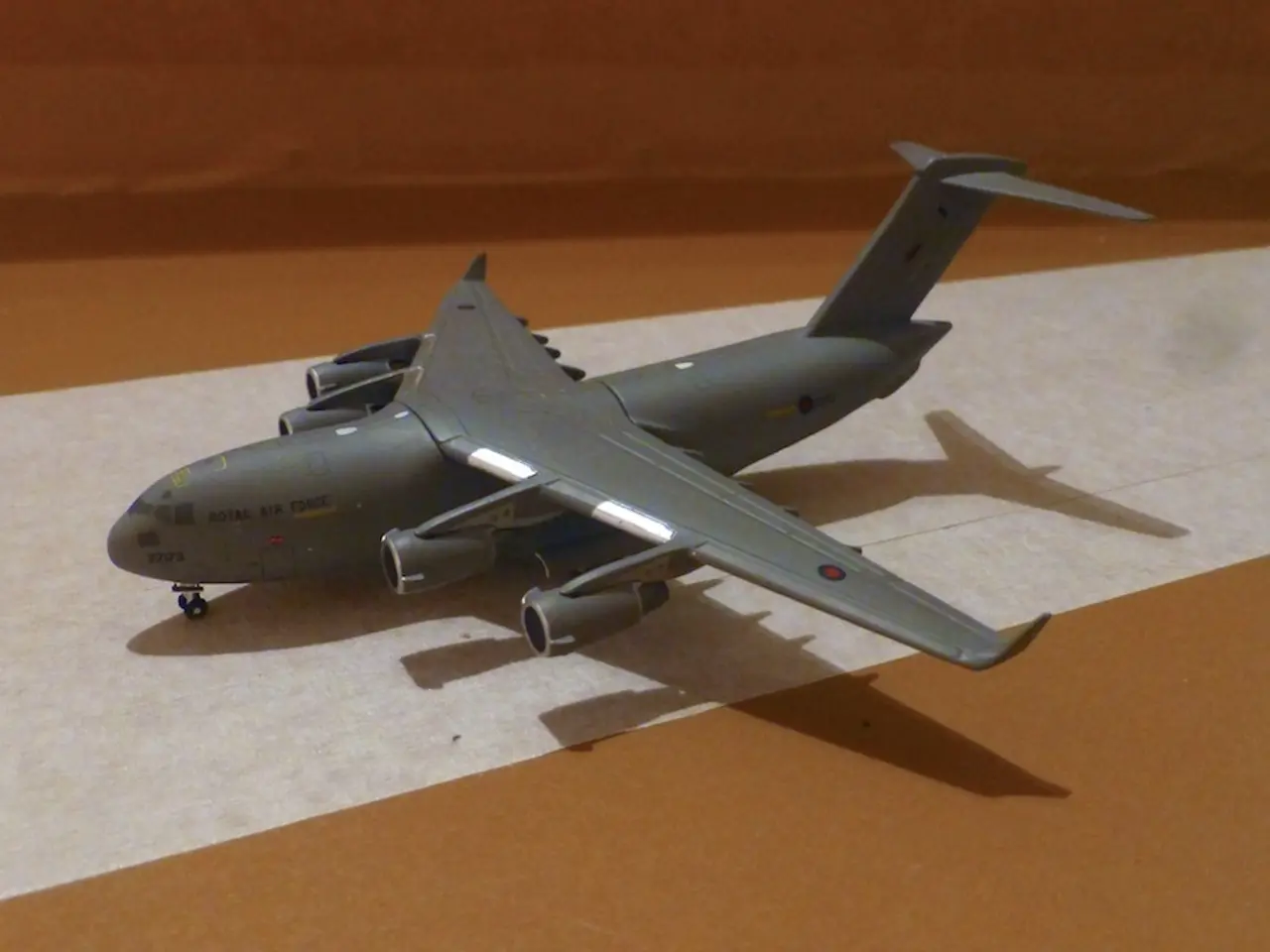Defense Department Encouraged to Keep Pace with Adaptive Engine Technology, According to GE
The development of the Navy's F/A-XX fighter program, which includes the Next-Generation Adaptive Propulsion (NGAP) engine, is currently in a state of significant uncertainty and slowdown[1][2][3]. This situation arises primarily due to the Pentagon's focus on the U.S. Air Force’s F-47 sixth-generation fighter, which has received more substantial funding and political backing.
Key Points Regarding the Current Status and Potential Timeline
- The F/A-XX program is currently receiving only minimal funding (about $74 million requested for FY 2025) to preserve design work and the ability to leverage progress on the Air Force’s F-47 program, not for active or full-scale development[1].
- The rationale for this decision is that the U.S. defense industrial base cannot simultaneously handle two full sixth-generation fighter developments, leading the administration to prioritize the F-47 program, which, as of 2025, has $3.5 billion allocated for continued development[1][3].
- The Navy's program was proposed to be "gutted" or put "on ice" indefinitely to prevent competition for limited industrial capacity and funding, meaning NGAP engine development specific to F/A-XX is likely delayed substantially or on hold[1][3].
- Congress has shown some interest in restoring funding to the F/A-XX program, with Senate Appropriations Committee draft legislation proposing $1.4 billion for the F/A-XX in FY 2026, signaling a possibility of reviving or accelerating the work in the near future. This marks a conflict between Congress and Pentagon leadership priorities[2].
- The original plans for the F/A-XX aimed for an operational replacement of the legacy Super Hornet in the 2030s, leveraging advanced technologies such as supercruise, next-generation stealth, and adaptive propulsion like NGAP. But given current funding and prioritization, timelines for propulsion (NGAP) development and overall airframe progress are now unclear and likely extended[4].
The White House's Concerns
The White House has expressed concerns about the availability of engineering talent to develop both F/A-XX and F-47 simultaneously[1].
The Advantages of Adaptive Engine Technology
The adaptive engine technology, which is being developed for the F/A-XX, offers more acceleration for fighter maneuvers and reduced fuel consumption in cruise or loiter modes[1].
International Collaborations
GE, a key player in the F/A-XX program, is participating in the Global Combat Air Program, a partnership between Italy, the U.K., and Japan to develop a sixth-generation fighter, with GE representing Italy as an equal propulsion partner[1]. The next-gen indigenous European fighter, led by the Global Combat Air Program, is targeting 2035 as its service date.
The F/A-XX's Role in the Navy's Vision
The F/A-XX is described as a "critical component" of the "air wing of the future" by the Navy, due to its combination of range, stealth, advanced sensors, and standoff capabilities in highly contested environments[1].
GE's Investments in Test Infrastructure
GE has made significant investments in its test infrastructure at select manufacturing sites, enabling higher mission-relevant testing in the hypersonic arena[1].
In summary, as of August 2025, the Navy’s NGAP engine under the F/A-XX program is in a state of minimal activity with most development effort paused or deferred, pending potential Congressional budget shifts. The timeline for NGAP and the F/A-XX fighter likely extends well beyond the early 2030s without renewed and sustained funding, currently hinging on political decisions balancing industrial base capacity and inter-service fighter priorities[1][2][3][4].
- The development of the F/A-XX fighter program, which incorporates the Next-Generation Adaptive Propulsion (NGAP) engine, is currently in a state of minimal activity, with most development efforts paused or deferred.
- The space force, air force, and aerospace industry are intensely engaged in the development of advanced fighter aircraft such as the F-47 sixth-generation fighter and the Navy's F/A-XX.
- The F/A-XX program, a critical component of the Navy's vision for the air wing of the future, is dependent on the success and timely development of the NGAP engine.
- The adaptive engine technology under development for the F/A-XX offers improved acceleration for fighter maneuvers and reduced fuel consumption in cruise or loiter modes, making it an appealing technology for the aerospace industry.
- To support the development of the NGAP engine and other cutting-edge technologies, financial investments in test infrastructure are essential, as demonstrated by GE's significant investments in select manufacturing sites.








